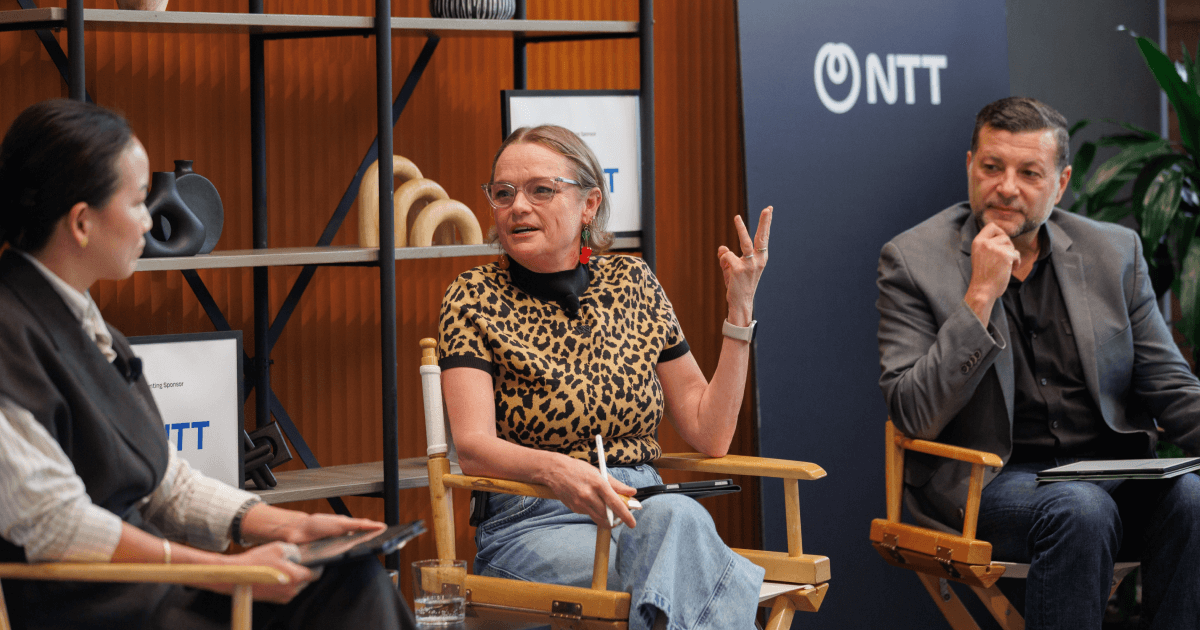A creative’s approach to leading design workshops



Sometimes the task of “being creative” can feel like floating in space. Especially in the context of design leaders facilitating workshops with many stakeholders, at different volume levels, looking for help ideating and navigating key decisions. We must guard against the weightless void where wrong action sends you hurtling through time, and inaction leaves you slowly spinning in place.
So let’s discuss navigating this space by using principles related to vision, discovery, strategy, collaboration, and design — a creative guide that walks through various approaches with varying execution.
Think of these steps as nonlinear tools that you can use in any order. The steps capture different perspectives based on where you’re at in a project or product. Feel free to jump around — and be free!
1. Research
You should start every project by brushing up on items like the industry vertical, key personnel, competitors, and process items like the statement of work and project deliverables. You should carry research activities through the life of the project or creative endeavor (it’s rare to ever arrive at the end of learning).
2. Strategery
After carrying out initial research, you should have a good sense of the plan of action for your team. Now it’s time to consider the paths that could get the project to the end goal. Weigh the pros and cons and informally determine how you would like to carry things out. The intention here is to map out a path from 10,000 feet, rather than trying to formalize a detailed strategy.
3. Rehearse
Consider the end goal and unleash your inner monologue to kick off a debate of overall project goals and blockers. This exercise helps your team anticipate possible paths in a continued effort to determine the best, most probable way forward.
4. Get to know the cast
Some of the best work is created by diverse and well-balanced teams. Rarely do we have the opportunity to hand-select the participants, and more often we’re simply placed in a team setting with a timeline and a set of deliverables.
This is where soft skills related to making human connections and motivating the team around a common goal are vital. Who always grabs the mic first? Where are the introverts, and how can you help them find a voice? Who is the domain expert? You must quickly identify who the players are, and identify ways to find balance.
5. Read the room
Consider what’s happening in the world, as a whole and individually for teammates. There’s a trick you learn early in business called mirroring, whereby you mimic the movements of the people you’re engaging with. It’s like that, but be sincere.
6. Bring the vibes
This is an extension of reading the room, where you’re now responsible for elevating the opportunity for magic to happen. Sometimes you gotta pump yourself up, but rest assured that enthusiasm is a necessary ingredient in any magical creative.
7. Prepare activities
It seems obvious, however, some approach workshops with only this in mind, as though setting up the game is all that goes into it. Make sure the activities fit the project goals, stakeholder personalities, and most importantly, carry momentum toward action.
8. Encourage sincerity
The first minute of every video call is your opportunity to catch a stakeholder in the virtual elevator. Get to know who you’re working with; it helps. Be self-deprecating. Ask how their day is going. Tell a story about yourself. Avoid awkward silence at all costs.
9. Make the assist
Challenge yourself to acknowledge player involvement, above your own. Pump-fake and look for opportunities to set a teammate up for a shot at the elbow.
10. Listen intently
Make sure your environment is as free as possible from distraction. Put your computer in Focus mode, close Slack, and set your video window up so you can see the whole crew. Look at someone as though they’re sitting across from you. They can’t tell (necessarily), but it’ll help you focus on what they’re saying (verbally and non-verbally).
11. Read between the lines
Look for the things that are being said, not necessarily with words. Pay attention to overall sentiment. Take note of repeat items.
12. Find reference
Look for the things that are being said, not necessarily with words. Pay attention to overall sentiment. Take note of repeat items.
In the same way that a picture is worth a thousand words, a proper reference can help the group articulate what’s special or desired. Don’t go too hard on this one though — I believe we should take reference at first glance and then do our best to ignore it. Your brain will grab hold of the good memories when needed. Always be original.
13. Set a benchmark
Oftentimes, we’re designing for scenarios that don’t currently exist. Use this as an opportunity to identify shared language and begin to set standards you can measure against.
Example: This needs to be doper than “x,” or easier to use than “y.”
14. Tiptoe the edge
I’m deathly afraid of heights, but I love to put myself in uncomfortable situations where I’m forced to face the heebie-jeebies my body goes through because it makes me stronger and reduces fears for next time. In the same sense, finding out what the project or the client feels is too far helps to ground the creative and zero in on how far we’re willing to go.
15. Decipher the cypher
It’s the creative’s job to understand the different ways stakeholders speak and weigh in on information. Much like breaking down your favorite song lyrics, it requires an understanding of context, past tracks, beef, etc.
16. Harmonize
Now that you understand what’s being said, it’s time to take what all the stakeholders have said and begin to synthesize. Find ways to bridge the various points of view into a cohesive vision. Help the group finish one another’s thoughts.
17. Form an opinion
Lots of information has come in by now, and it’s high time to start thinking about where you stand. I believe that it’s our job to have opinions; a creative without opinions is like an archer without arrows. Shoot your shot.
18. Have a vision
Solidify your opinion further by applying the overall thinking to specific project and product goals. Begin to “see” in your mind how everything is shaping up.
19. Group therapy
When in doubt, talk it out. Discuss where the project, product, or group is headed. This is especially important during stressful moments in the project lifecycle when we just need a virtual hug.
20. Decide on a path
After sharing opinions and visions as a group, you can begin to make decisions about where we’re going. Start to pressure test the thinking against real scenarios.
21. Refine the concept
Everything up until now is formed by broad strokes and overall concepts. Highlight the primary reasons why this is the one. Get into the details and understand any areas that could risk success.
22. Change everything
Just when you think you’ve got it, be prepared for everything to change. The client will undoubtedly want to change everything. This is oftentimes a result of fear or a lack of desire to climb the mountain.
23. Play blank face
Sometimes, in the face of fear and doubt, it’s beneficial to be patient and wait it out. Don’t overreact and freak out; it won’t help anyone. Let the project or client take a moment to breathe.
24. Stand your ground
Now that you’ve been faced with peril, you should come out with a stronger sense of what’s right. Reengage your vision, and project it even brighter as a group.
25. Build up confidence
Once you’ve almost lost the concept, the first-day jitters are gone. Now what do you have to lose? Push forward with a stronger sense of conviction. Believe every word you say.
26. Fall in love, again
At this point in the project, your vision and confidence are strong. Add a bit of passion, empathy, and care for a proper mix. Follow your heart.
27. Tell a story
We’re in the business of storytelling. Develop your project/product story and begin practicing. View this as the movie trailer and include only the important parts for maximum wow.
28. Hear other stories
Listen to how the rest of the group feels about everything. Play like a writer’s room and collectively develop the primary story, made up of individual character lines.
29. Share the recipe
Prepare the ingredients and directions necessary for the project to thrive, and potentially change hands throughout the process. Consider each perspective an opportunity to perfect the recipe with a pinch of this or that.
30. Lend your voice
Unfortunately, we can’t all be in the room all the time. Consider ways that you can incorporate the group’s thinking and style of pitching into the final artifacts. You need a tailored presentation for the world-class product you’re ready to deliver.
31. Be ExtraPlus™
Go farther than anyone expects and do something outstanding. This is an extension of the traditional “underpromise and overdeliver” mantra. It’s also a chance to show that we recognize one another.
32. Help pitch the idea
Put yourself in the client’s shoes and consider how you can help prepare them for the difficult VC or in-house conversations. Play both sides of the argument in an effort to work out the kinks in a safe environment.
33. Recommend next steps
Ideas are a dime a dozen, which is where strategy comes back into play. With your experience, recommend where the project or product could go next.
34. Make connections
Help the project continue forward. Who, or what, can you introduce to the client; sometimes it’s key personnel, a potential funder, or a service that will help them level up. Send them off with some velocity toward progress.
35. Give thanks
What a world we live in, one in which we get to design experiences that have the potential to help humans. Be thankful for the group’s effort, and let that shine from your attitude.
36. Find takeaways
Did this project go perfectly? Prolly not, so do a quick retro and think about what you’ll do differently next time or how you might steer in a slightly different direction to alter the outcome. Enable a growth mindset.
37. Be flexible
Just like in space, there’s no up, down, left, or right. So be prepared to keep it loose, flexible, and free-flowing. Sometimes we start at the end or in the middle. Keep learning, and be prepared to do it all over again!



